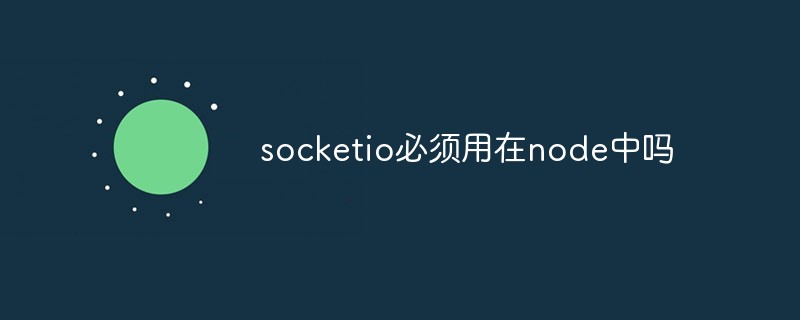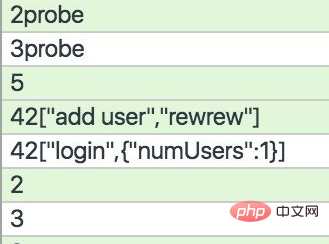
socketio must be used in node; socketio is a library of nodejs. It uses nodejs functions to encapsulate some functions and relies on some nodejs APIs, so it can only be used in nodejs. Socketio is also on the client side. The two-way communication data exchange technology established between the server and the server uses EngineIO at the bottom.

The operating environment of this article: Windows 10 system, nodejs version 16, Dell G3 computer.
socketio is a library of nodejs. It is equivalent to others using nodejs functions to encapsulate some functions for you to use. It depends on some APIs of nodejs, so it can only Used under nodejs.
SocketIO is a two-way communication data exchange technology established between the client and the server. The underlying layer uses EngineIO. The client of SocketIO uses Engine.IO-Client, and the server uses Engine.IO.
Extended knowledge
How SocketIO works
When a browser attempts to establish SocketIO, SocketIO first uses xhr-polling Create a long poll. Once the long polling is established, it will be upgraded to a WebSocket connection.
The bottom layer of SocketIO is implemented using the EngineIO library. This library uses WebSocket and XMLHttprequest to encapsulate a set of its own Socket protocol (temporarily called EIO Socket). A complete EIO Socket includes multiple XHR and WebSocket connections.
Client
EIO Socket passes an XHR (XMLHttprequest) handshake. The front end sends an XHR to tell the server that I want to start XHR long polling. The data returned by the backend includes an open flag (represented by the number 0), as well as sid and upgrades fields, ping interval, and ping timeout.
0{
“sid”: “8b7ab1ae-fbcf-4d23-8192-3c14a2a90721”,
“upgrades”: [
“websocket”
],
“pingInterval”: 10000,
“pingTimeout”: 60000
}sid is the session ID of this EIO Socket. Because one EIO Socket contains multiple requests, and the backend will connect to multiple EIO Sockets at the same time, the sid is equivalent to the SESSION ID.
Another field upgrades, normally [‘websocket’], indicates that the connection method can be upgraded from long polling to WebSocket.
The front end starts XHR long polling when sending the first XHR. If there is a need to send and receive data at this time, it is implemented through long polling. The so-called long polling means that the front end sends a request, and the server waits until there is data to be returned before responding. The front end immediately sends the next request after receiving the response. This enables two-way communication.
After the front end receives the handshake upgrades, EIO will detect whether the browser supports WebSocket. If it supports it, it will start a WebSocket connection, and then send a piece of data with the content of probe and type of ping to the server through this WebSocket. . If the server returns data with the content of probe and type of pong at this time, the front end will stop the HTTP long polling established previously, and then only use the WebSocket channel to send and receive data
During the EIO Socket life cycle, It will ping - pong once every once in a while to test whether the network is normal.

This is the structure of the WebSocket frame, green is sending and white is receiving. The previous number is the packet type, 2 is ping, 3 is pong, 42 is message
Recommended learning: "nodejs video tutorial"
The above is the detailed content of Does socketio have to be used in node?. For more information, please follow other related articles on the PHP Chinese website!
 Introduction to the meaning of cloud download windows
Introduction to the meaning of cloud download windows
 Solution to the problem that setting the Chinese interface of vscode does not take effect
Solution to the problem that setting the Chinese interface of vscode does not take effect
 How to close port 135 445
How to close port 135 445
 Why is the mobile hard drive so slow to open?
Why is the mobile hard drive so slow to open?
 How to use split in python
How to use split in python
 mobile phone screen tft
mobile phone screen tft
 How to resize pictures in ps
How to resize pictures in ps
 0x80070057 parameter error solution
0x80070057 parameter error solution